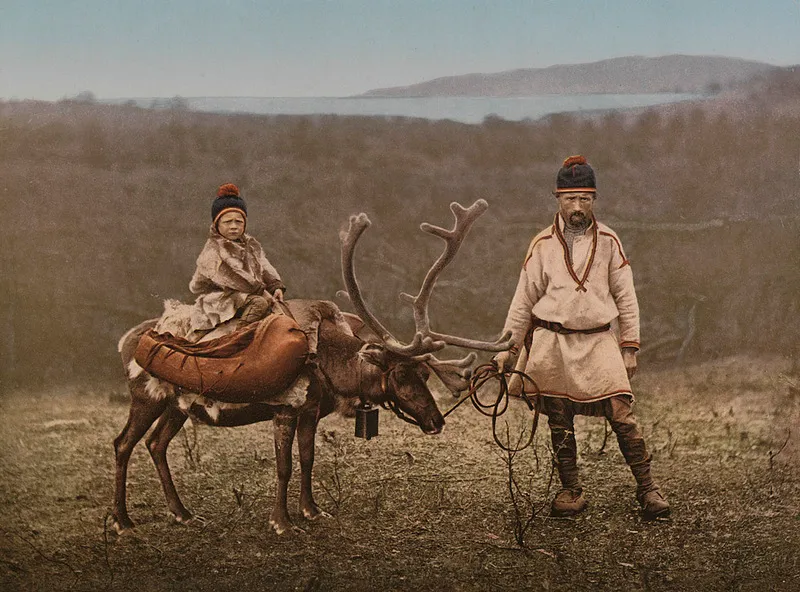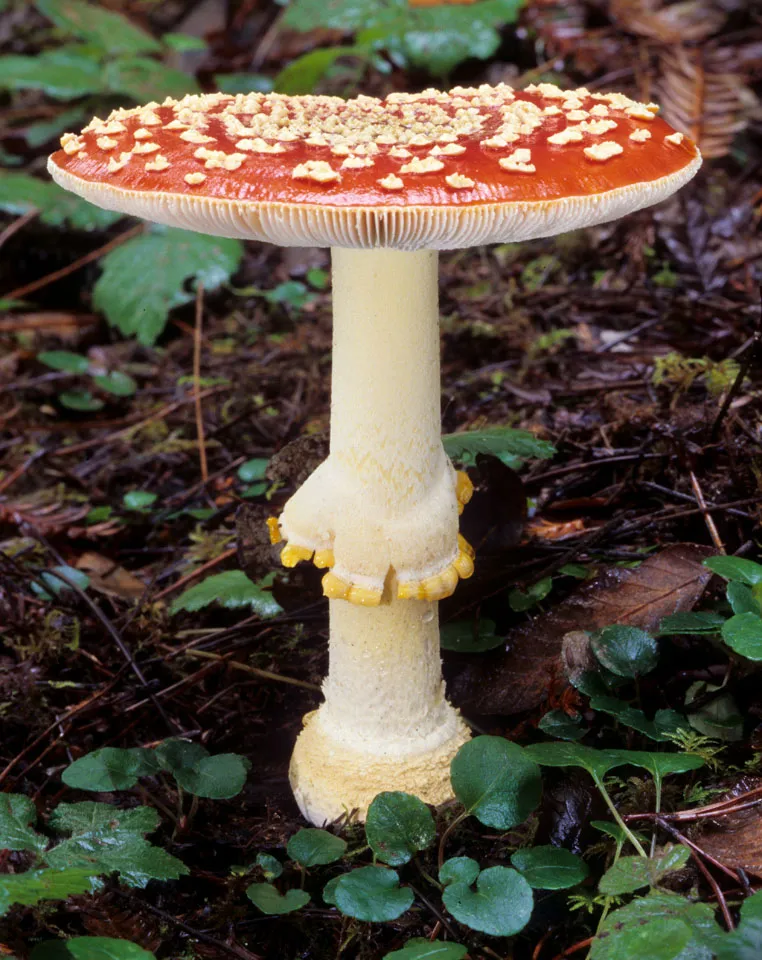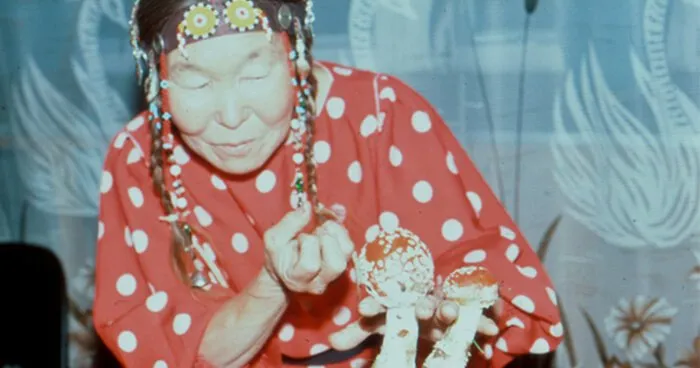Santa Claus and Amanita muscaria: A Natural Story



The origin of many stories that permeate our traditions and customs remains unclear, so this Christmas story results in a clear example of the above. Although the non-pagan narrative of the rise of Santa Claus dates back to Saint Nicholas, a 4th century Greek saint known for his generosity, are there some other theories that stand out for their particular coincidence? Or because of their strong adherence to the uses and customs that some non-Western or Westernized peoples still preserve. Although the Germanic and Roman peoples also ended their calendars with the December festivities, whether they celebrated Yule or the festivities dedicated to the god Saturn, today we decided to talk about a theory that flourishes from the Sami people, who occupy the Lapland region in the north of Scandinavia, as well as other nomadic tribes from Siberia and Eastern Russia; This is the story of how Santa Claus was a Siberian shaman and how Amanita muscaria, this mushroom, characteristic of its red color and white scales, was its connection with the divine. Through this analysis, we can observe, once again, how much cultural ecosystem services permeate our identity. It's all starting to make sense, isn't it?

Amanita muscaria, photo: Michael Wood
Let's start by naming a first coincidence or reality, we will leave this dilemma -as well as the next ones- to the reader's discretion. La Amanita muscaria It is a mushroom -which, again, stands out for being red with white scales, colors coincidentally typical of Santa Claus's clothing- that is widely distributed across the globe, however, it does not have the same effects in all its locations. Apparently, the A. muscaria What is found in America tends to be more poisonous than entheogenic, that is, it can cause death as opposed to a modified state of consciousness. However, the A. muscaria which is distributed in Eurasia, is usually more entheogenic than deadly (Lincoff and Michel, 1977), which makes sense due to the use given to it by shamans in Siberia... And the reindeer.

Tatiana, a shaman belonging to the Tungús people, Eastern Siberia, performing a ritual with Amanita muscaria
In addition to its entheogenic properties, the A. muscaria It is a mycorrhizal fungus of pine and oak, that is, it maintains a very important symbiotic function with these trees, which is reflected in the fact that when fruiting bodies (the fungus as we know it colloquially) they begin to emerge and grow, let's see then Amanitas under the pine trees, just as we see presents under the Christmas trees.
This particular mushroom contains muscimol, a psychoactive component that allows Siberian shamans to connect with the divine in order to heal. There are several theories about how they consumed these mushrooms. On the one hand, it is believed that it was direct consumption; on the other hand, it is believed that they did so by drinking the urine of reindeer, which are also frequent predators of this organism. Let's take a short break from shamanism and look away for a moment to reindeer, because they are also very representative of the Santa Claus archetype: in Siberia, as in other parts of the Arctic, winters can become monotonous and animals can sense it, so they are looking for ways to get out of their white reality. It is nothing new that animals playfully use entheogenic compounds, so the consumption of A. muscaria on the part of reindeer it has been very well studied (Maret, 1991). The question here is, do they fly through the skies dragging a sleigh full of presents? Although I couldn't solve this, Terence Mckenna, an American ethnobotanist who has extensively studied entheogenic fungi, posits that although not, reindeer don't fly, the trance in which shamans and reindeer are consuming Amanita muscaria on the one hand, it can cause shamans to see reindeer flying, and on the other, reindeer to behave extremely atypical (Partridge, 2018).
Returning to shamanism in Siberia, we can say that this ancient practice of eating Amanita muscaria comes from an ancient legend about a raven -the deity of many peoples of Eastern Russia- who one day ingests this mushroom and manages to understand the secrets of life through the spirit and voice of the organism, which also tells the bird that it will leave its body on Earth, so that its children -humans- can also access its knowledge (Read et al. , 2018). This reveals to us, on the one hand, that it is a widespread shamanic practice in regions of the Arctic because it is related to an entire worldview, and on the other hand, that this shaman who ingests A. muscaria in winter to deepen its relationship with the divine and spread the knowledge learned with the rest of the community, in one way or another, it also communicates some of the current values that we remember today during these times, such as the importance of sharing the ends and beginnings of cycles with our community.
That said, it needs to be mentioned that part of this ritual of eating A. muscaria involves the shaman passing through the homes of the community to leave a gift: a small supply of this medicine in the form of a dried mushroom for the benefit and reflection of the family. Another coincidence? It results from the drying process of this mushroom, since shamans usually collect them at the beginning of winter and hang them in pine trees to dry them over time, in the same way that today we hang spheres and other ornaments on Christmas trees.
Although this is nothing more than just a theory that allows us to make traditions visible in regions that we rarely look at, it is also a clear example of the importance that cultural ecosystem services play in the development of our civilizations and societies. There will be those who, due to his sociobiological context, decide to understand Santa Claus under the theory of Saint Nicholas, others more like that of the god Saturn; however, today we decided to tell the version of Santa Claus as a Siberian shaman because it returns us to a story full of connection with nature, its medicinal and healing properties, a strong spiritual implication and an entire identity that some peoples of Eastern Russia carry with them.
Whatever way you decide to celebrate the holidays, we hope that as well as the Amanita muscaria allows shamans to transmit the voice and experience of their deities, so that this time of year allows us to share, exchange and deepen our reflections on how we relate to nature today, as well as our intention for the future. May this story allow us to honor our lands, our forests, our traditions, our medicines, our community and our planet.
About the author:
Sandra is Executive Editor in Toronto. He studied biology at the UNAM. He loves to read and be in nature.
References:
Partridge, C. (2018). Psychedelic Shamanism, High Culture: Drugs, Mysticism, and the Pursuit of Transcendence in the Modern World (New York, 2018; online edition, Oxford Academic). Available in: https://doi.org/10.1093/oso/9780190459116.003.0009
Explore reflections, research and field learning from our work in ecosystem restoration.